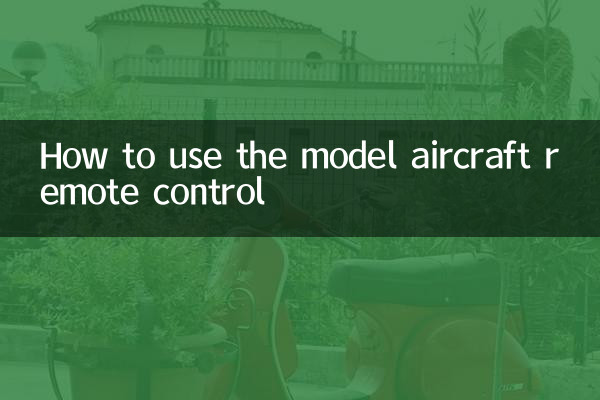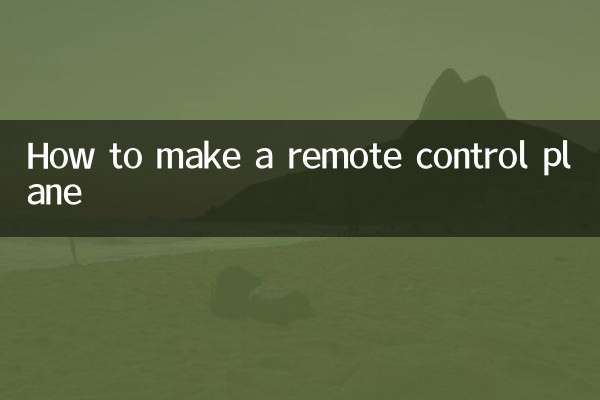How to use the model aircraft remote control
Model aircraft remote control is the core tool for controlling model equipment such as drones and remote-controlled aircraft. Mastering its usage method is crucial for model aircraft enthusiasts. This article will introduce in detail the functions, operating steps and solutions to common problems of the model aircraft remote control to help beginners get started quickly.
1. Basic functions of model aircraft remote control

A model aircraft remote control usually consists of two parts: a transmitter and a receiver, and is remotely controlled through radio signals. Here are its main functions:
| Function | illustrate |
|---|---|
| Channel control | Control different actions of model aircraft through multiple channels, such as accelerator, direction, lifting, etc. |
| Signal transmission | Use 2.4GHz or other frequency bands to transmit signals to ensure stability and anti-interference capabilities |
| Mode Switching | Supports multiple flight modes, such as manual mode, automatic mode, etc. |
| Parameter adjustment | Adjustable parameters such as sensitivity, rudder volume, etc. to meet different flight needs |
2. Steps for using model aircraft remote control
1.Installation and matching
First, install the receiver on the model aircraft and pair it with the remote control. Make sure both are in the same frequency band and complete the binding operation according to the instructions.
2.Calibrate the remote control
After the battery is first used or replaced, the remote control needs to be calibrated. The specific steps are as follows:
| step | operate |
|---|---|
| 1 | Turn on the remote control and enter calibration mode |
| 2 | Put the rocker in a neutral position and press the calibration button |
| 3 | Move the joystick to the maximum and minimum positions in turn to complete the calibration |
3.Set flight parameters
Adjust the parameters of the remote control according to the type of model aircraft and flight requirements. For example, set the throttle curve, rudder volume, etc.
4.Testing and Flying
Before a formal flight, conduct ground tests to ensure that all channels respond properly. After confirming that, you can start flying.
3. Frequently Asked Questions and Solutions
1.The remote control cannot connect to the receiver
Possible reasons: Band mismatch or insufficient battery power. Solution: Check the frequency band settings and replace the battery.
2.Model aircraft response delay
Possible reasons: signal interference or the remote control is too far away. Solution: Change the flight site or shorten the remote control distance.
3.The rocker fails
Possible causes: Damage or poor contact of the rocker potentiometer. Solution: Clean the potentiometer or replace the rocker module.
4. Recommended popular model aircraft remote control
The following are the popular model aircraft remote control models and their features in the market recently:
| model | Features | Price range |
|---|---|---|
| FrSky Taranis X9D | Open source system, supports multi-channel, and cost-effective | 800-1200 yuan |
| FlySky FS-i6 | Lightweight and easy to use, suitable for beginners | 300-500 yuan |
| Spektrum DX6e | High performance, supports DSMX/DSM2 protocol | 1000-1500 yuan |
5. Precautions for safe use
1. Check the power of the remote control and model aircraft before flight to ensure sufficient power.
2. Avoid operating model aircraft in crowded or no-fly areas.
3. Regularly maintain the remote control, clean the rocker and buttons to prevent dust from affecting performance.
4. Comply with local laws and regulations to ensure flight safety.
Through the above introduction, I believe everyone has a clearer understanding of the use of model aircraft remote control. Mastering the correct operating methods can not only improve the flight experience, but also ensure safety. If you are a beginner, it is recommended to start with the entry-level remote control and gradually become familiar with various functions.

check the details

check the details